Continuation of the journey to the lost world of Baysun, Uzbekistan
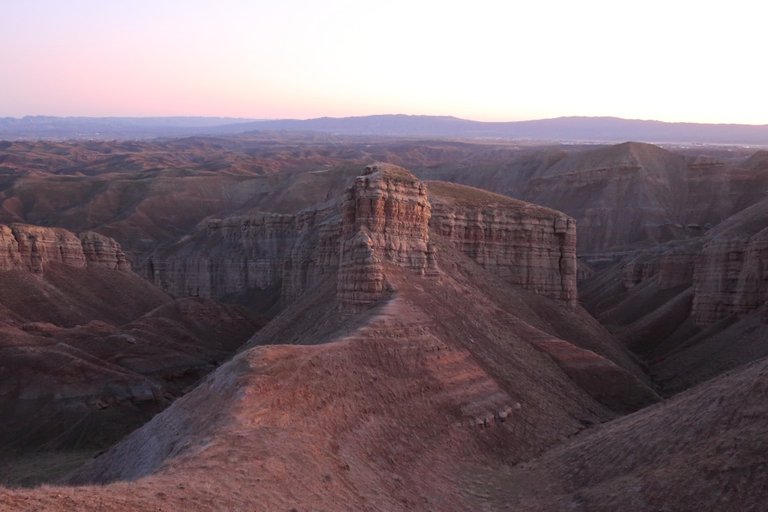
Hello! Today I will tell you about the second day of my trip to the beautiful Baysun. As you remember from my previous story we returned cold and hungry to the hospitable guest house of Choraka. The next morning I woke up before everyone else. I did lie in bed some time, looked at the phone and listening to the snores of his roommates. Then I get bored and slowly went out into the street so as not to wake up anyone. It was pretty cool outside but there was nothing to be done - both the toilet and the washstand were located at the other end of the courtyard, little bit away from the living rooms.
Having washed and breathed in the fresh morning air I returned to the room. My neighbors have also awakened and the household of Choraka began to work around the oven, preparing us a breakfast. For breakfast was offered a rice porridge in milk. To my surprise our guide put fig jam, honey and cherry jam into the porridge, mixed all this and began to eat with big appetite. I have a rule - repeat everything for experienced people. In this way I bought all the hiking camping equipment - spied on what experienced guides usually bring with them, how they dress and how they behave in the mountains.
So, I repeated the manipulations of our guide and tried the resulting dish. It was very good! Having quickly dealt with my portion and satisfying my hunger, I paid close attention to fig jam - it was so tasty!
After breakfast, we hit the road. Our first location was the Khojaipak cave with hydrogen sulfide waters, but it took about an hour to get to it. As soon as we checked out, our driver turned into a gas station. While he was refueling, we went out to breathe air and photograph the surroundings. In the regions of Uzbekistan for a long time and very actively transfer all transport to natural gas. It’s tight with gasoline, and it’s of poor quality, albeit expensive.
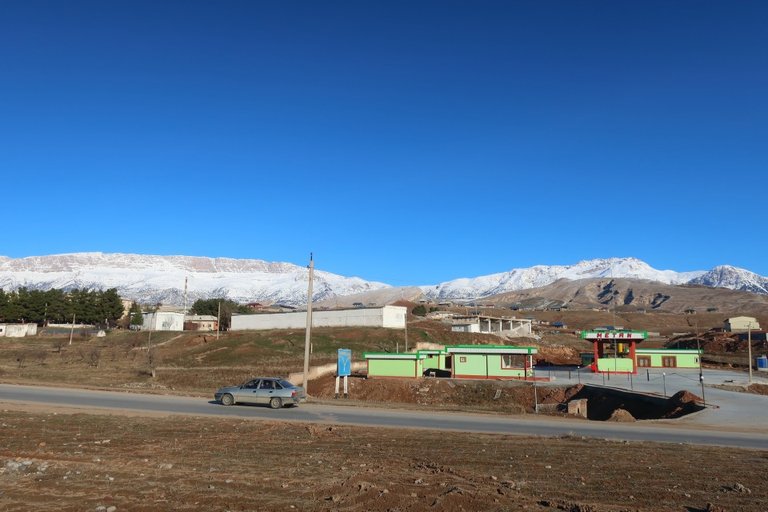
Soon the driver refueled and we drove on. On the way I photographed the Bandikhan ridge (if I remember correctly) and the swollen hills that looked like frozen lava. By the way, there is an interesting story about Bandikhan - there is an opinion that this ridge was named after ... bandits. In the 20-30 years of the twentieth century, the Basmachi (“Basmach” was a name of local insurgents) ruled here and in these places they allegedly had a parking lot. By the way, there are black drips, the origin of which is explained in different ways - depending on the narrator’s imagination. According to one of them these are the traces of caked blood of Red Army soldiers tormented by the Basmachi. According to anothers – it is a blood of sacrificial rams slaughtered by the Gentiles. But all this is not true. The toponym Bandikhan has a completely different origin and black streaks are traces of moss.
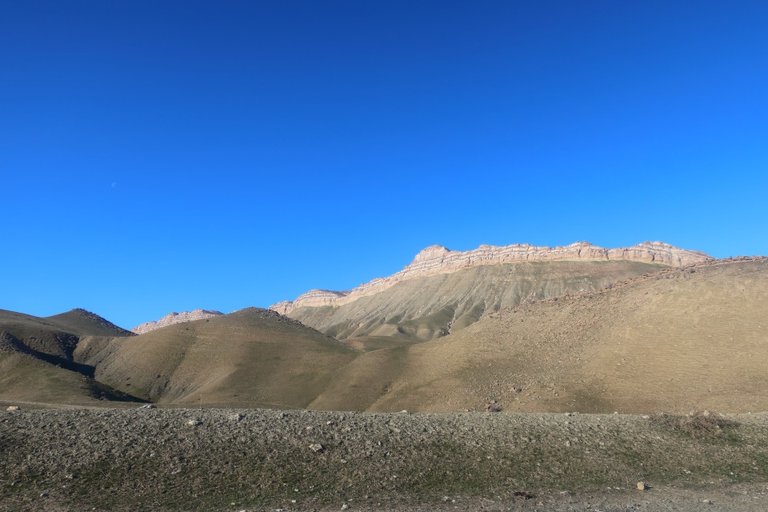

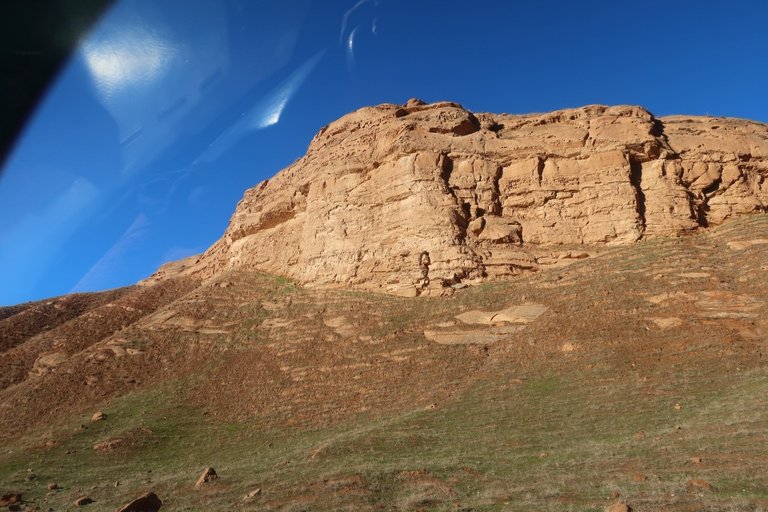
On the way, I noticed trays with bottles of water. It was a healing water from a rather famous place called Omonkhona, which is located nearby. This is mineral water that "heals everything and cleans everything."
If I’m going to healing hydrogen sulfide springs, I would like to elaborate on the topic of “healing waters” in more detail. And more precisely, on the not quite right (and sometimes absolutely wrong) culture of its consumption among the Uzbeks and Surkhandarya in particular. This water is really mineral and indeed can be beneficial for the body. For example, like Borjomi water. But is necessary to drink it a little bit, a glass in a day and strictly according to the instructions of the doctors. What is going on here? The water drinks of whole bottles! Moreover, people say that water helps from diseases of internal organs, with urological problems, with infertility, and so on. Like, drink it, get wet and you will be happy. Locals literally live thanks to this water. And they live quite well - they rebuilt their homes, bought cars. Omonkhona is very popular and there are many visitors.
A similar story is with the hydrogen sulfide source of Khojaipak. In Soviet times a sanatorium was built here for the treatment of skin diseases. In the sanatorium there were special baths where patients lay in healing water. Only now they lay strictly allotted time and under the supervision of doctors. And then USSR is disappeared and all sorts of tabibs (healers) appeared who began to treat everything with this water. People began to drink this water and fill it in all places.
To everything else, a so called “businessman” appeared here, who decided to build a modern sanatorium-medical complex on the site of the old Soviet sanatorium. Under this business-project, he asked for a big loan and even started work - he partially demolished the old Soviet houses, broke down the baths and the bazaar adjacent to the sanatorium, dug up part of the mountain near the cave with the source. So, he launched a stormy activity. Then, as usual, the money suddenly ended and he disappeared in an unknown direction. Now local authorities are looking for a new investor and visitors are forced to settle down partly on bare ground, and partly in surviving houses.
But back to our trip. Before reaching the cave a bit, we decided to make a short stop to enjoy the views and take pictures. And the views are wonderful. And instructive. See in the photo between the mountains puddles with rubble? This is the dried up bed of Khojaipak-say (“say” in Uzbek means a river). Once it was 200 meters wide, but due to warming and a decrease due to unreasonable water use, almost all dried up. And once here they washed gold. The waters of this river were rich in gold and in the old days they even found gold nuggets.
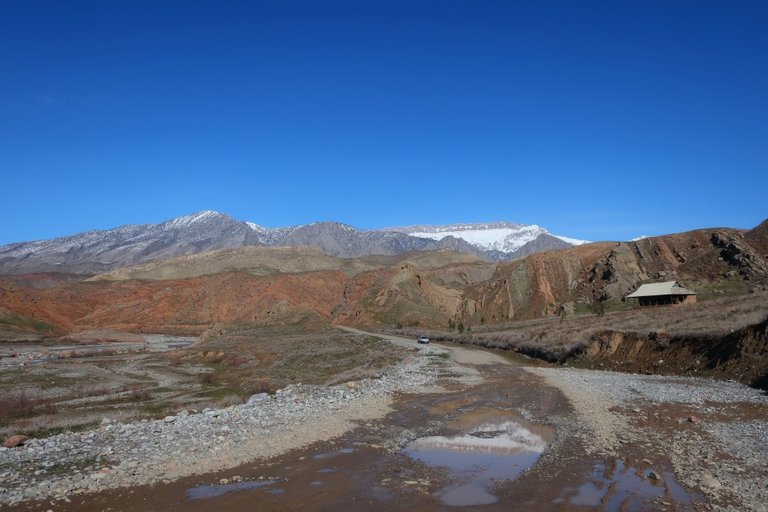
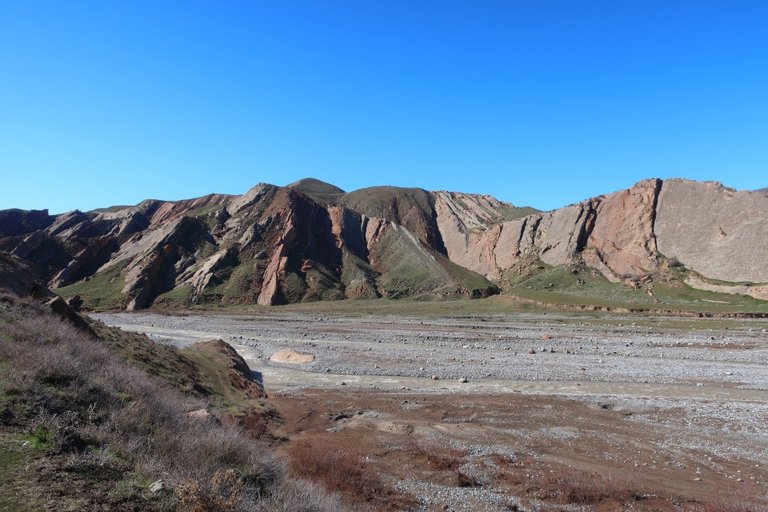
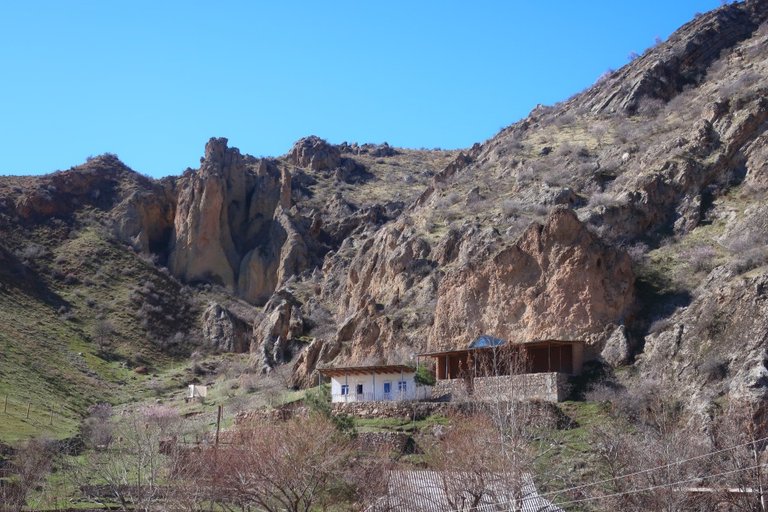
We drove up to the cave itself, unloaded and climbed inside. Outside, a unique smell of hydrogen sulfide was felt. And in the cave it was very strong. Initially, I wanted to walk deep into the cave - there are two rooms with a small lake. I even bought a headlamp and slippers for this. But the smell of hydrogen sulfide inside was so strong that I had to abandon this idea and jump outside, limiting to a couple of photos.
The caretaker of this place warned us that it is undesirable to stay in the cave for more than 20-30 minutes, otherwise you can breathe in hydrogen sulfide and then it will become bad.
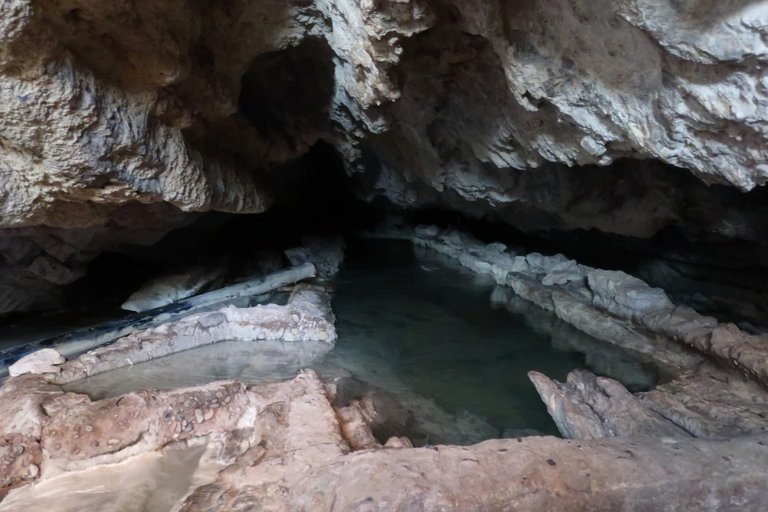
I got out into the fresh air and decided to walk around the neighborhood. I came across pipes from which this very hydrogen sulfide water flowed out and flowed into a stream. See? The water of an ordinary stream is brown, and hydrogen sulfide is gray, even silver.

Opposite the cave, I saw an interesting rock - with parallel cuts. The guide explained to us that this is not quite a rock but layers of soil. Firstly, a layer of soil formed here, then some grass grew on it. The earth was again laid on this grass, caused by wind, precipitation and this cycle was repeated many times. Later, the plant layer, caught between the layers rotted, forming voids between the boards. These voids are these “cuts”. The truth of this for a long time no one could see, because everything was hidden underground. And then some kind of cataclysm happened. Imagine that you are shaking a blanket and the fabric makes a wave-like motion. Here, apparently, it was similar - because of a powerful earthquake, the earth went in waves, throwing this massif out, where it froze and turned into such an unusual rock.
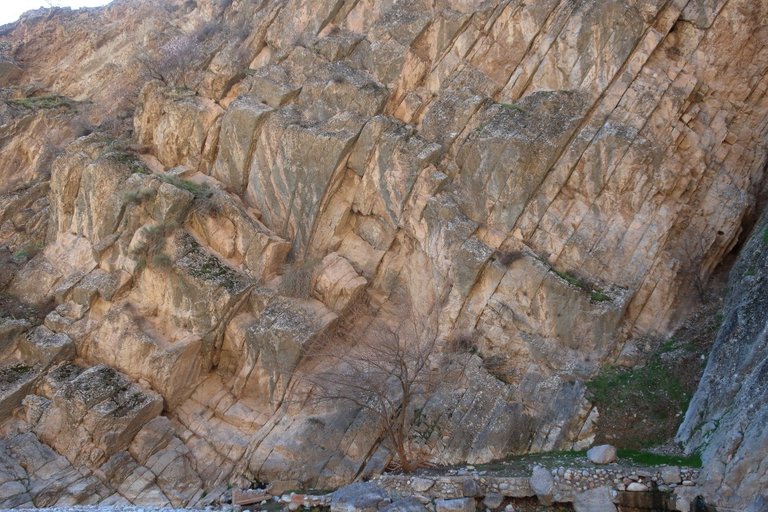
Surprised and admired by the forces of nature, we drove on to Khongarok-say.
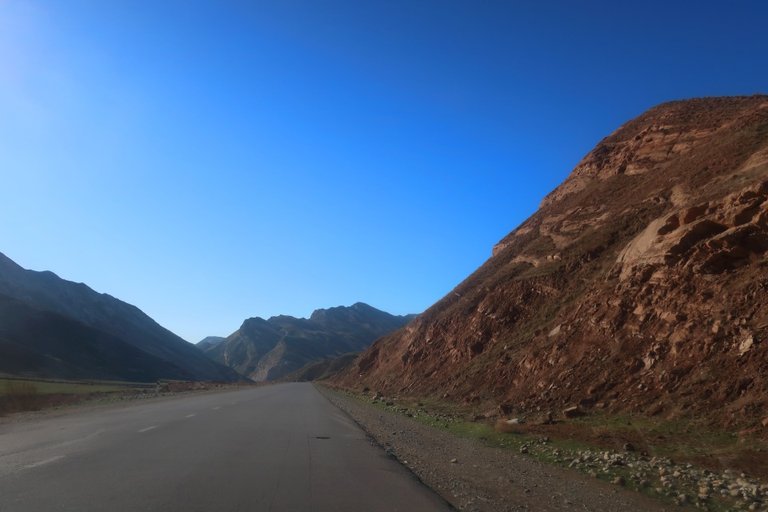
In the photo below, right in the center there is a small ridge, sometimes called the "dragon ridge" because of its teeth. In fact, he has some other name in the Uzbek language and has nothing to do with the dragon but I forgot it. Do you see snow-capped mountains in the distance? Here at their foot we climbed the day before. And at the top of this ridge are two massifs - Khoja Gur Gur Ota (3720m) and Khoja Buz Barak (3920m). This is where I decided to climb this summer

In this photo, the "ridge of the dragon" is better seen.

In the meantime, the summer is far away, we will return to my story. We drove up to a semicircular elevation near Khongarok-say
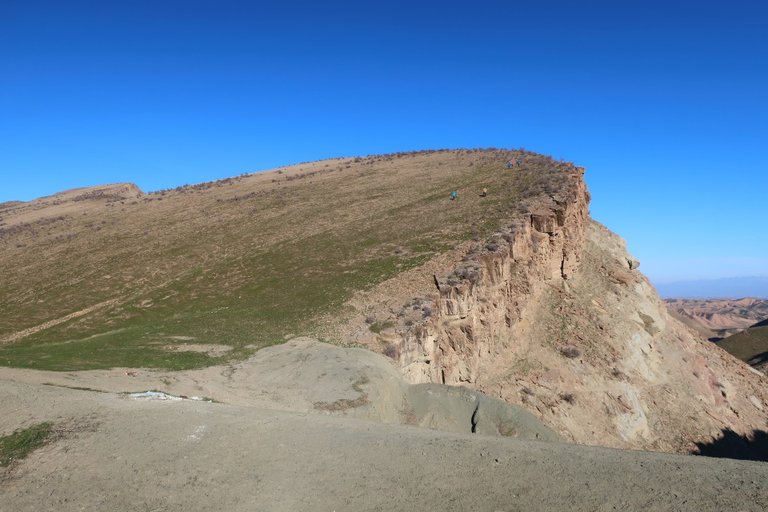
On the way up, I saw the first dandelion.
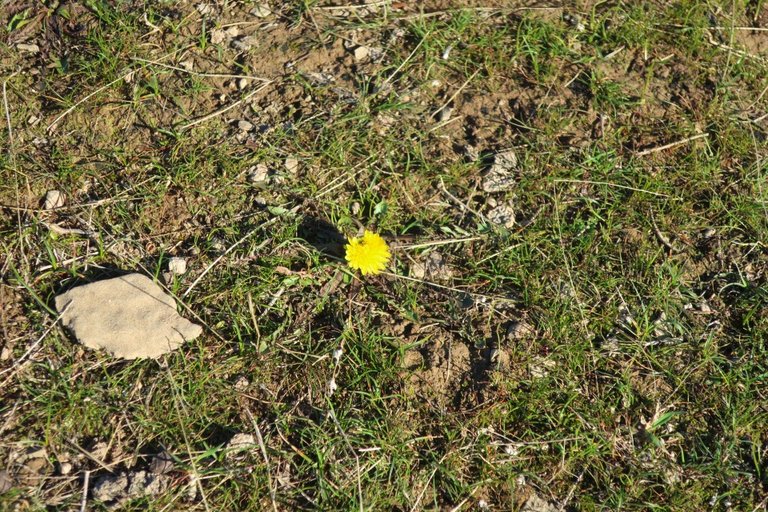
The view from above was very beautiful.

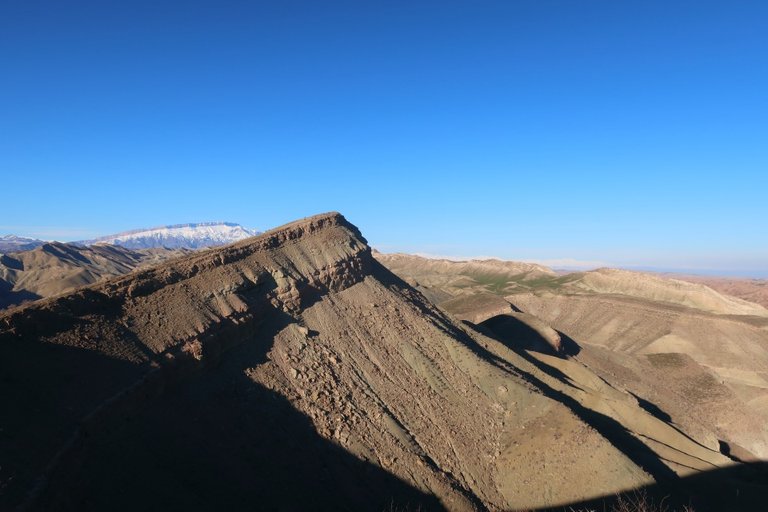
However, time was already running out for us and so we had to hurry. I asked the guide to obligatory have stop near a very interesting place, which I called for myself "City of Aeolian Castles". Look, it seems like these are the remains of ancient fortress walls. But no, this is not the creation of man’s hands, but a play of wind and water.
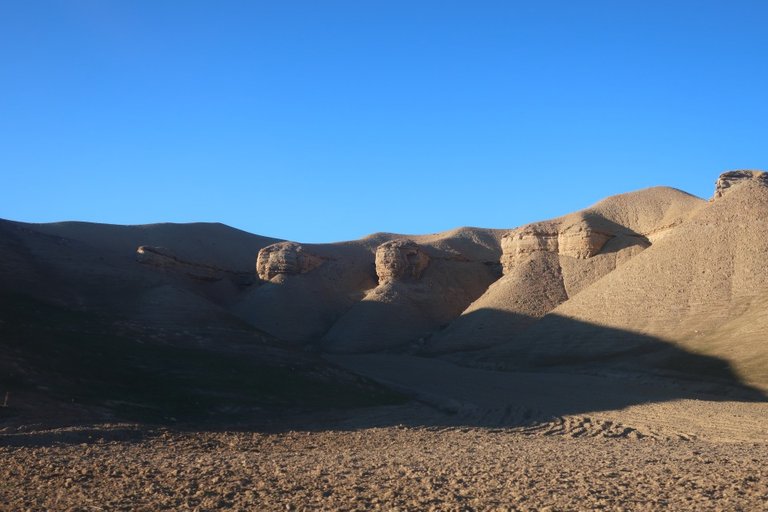
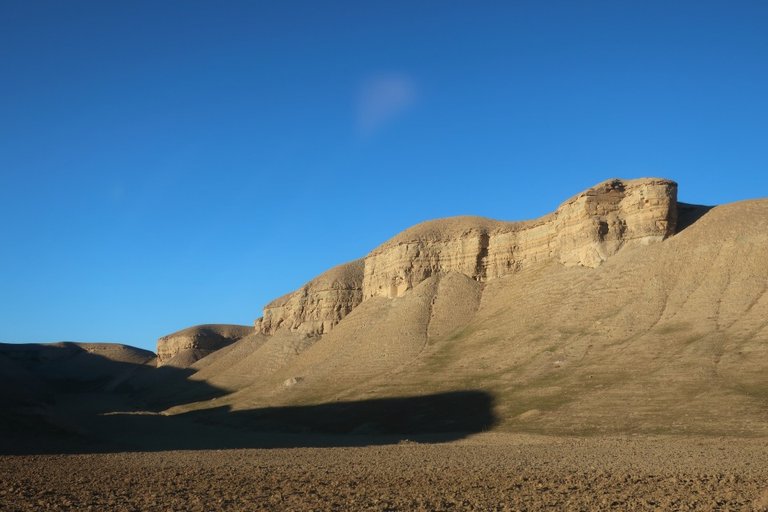
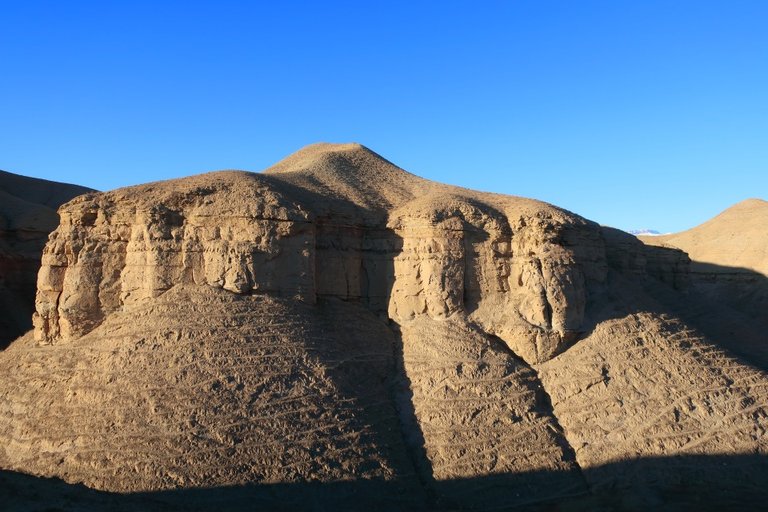
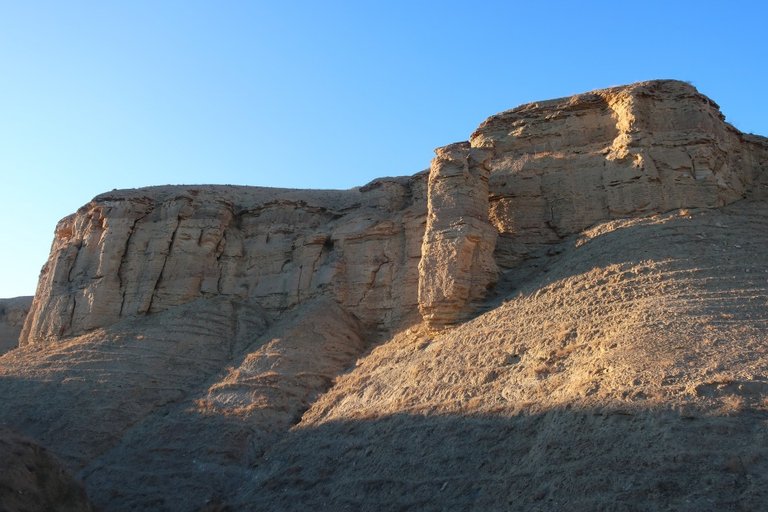

The guidebook says that this is Pudin Canyon and behind there is a village of the same name. The guide told us the story - they brought foreign tourists and during the story of the sights they said "Pudin village." If you pronounce quickly, it may seem that “Putin’s village” sounded. Foreigners were very surprised at the popularity of the Russian president in this corner and began to ask a guide about the attitude of the Uzbek people to Vladimir Putin. After that the guide was surprised - he did not understand why suddenly the foreigners became interested to Mr.Putin?
Of course, Uzbeks respect him, but the name of the village has nothing to do with Vladimir Putin. "Pudina" - translated from the Tajik language means "mint". It grows in the local area.
From aeolian castles we rushed to the Kyzyl Canyon (or the "Red Canyon"). The sun was already setting over the horizon and we had 20-30 minutes of light time left. Red Canyon fully lives up to its name. It felt like we were seeing Martian landscapes and the setting sun only enhanced this effect. By the way, looking ahead, I’ll say that I already signed up for a trip to this canyon on March 20-21. We will go down and walk it from beginning to its end. Actually, I planned at least two or three trips to Baysun. It won’t get away from me so easy.
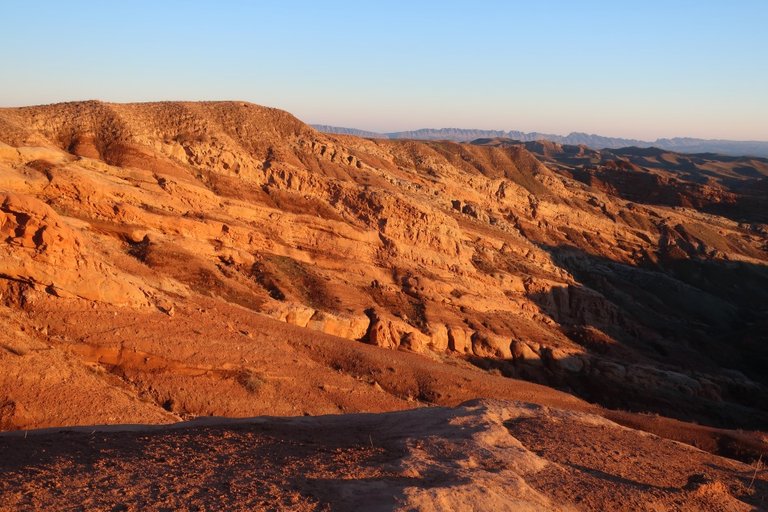
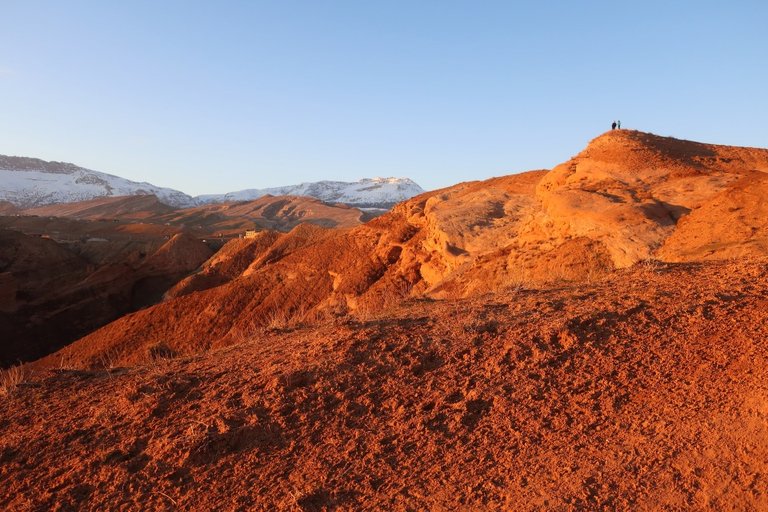
We traveled around Kyzyl Canyon and went to the other side. From there, an array called the "Ship" was visible. They say that it looks like the bow of a ship. Well, either the view was unsuccessful or I have a poor imagination ...

But on the other hand, this “Ship” looks like some kind of Thai or Indian palace. Don't you think? It looks like the patterns were carved on it.

Well, the sun has finally set. I took a farewell photo and wandered down.
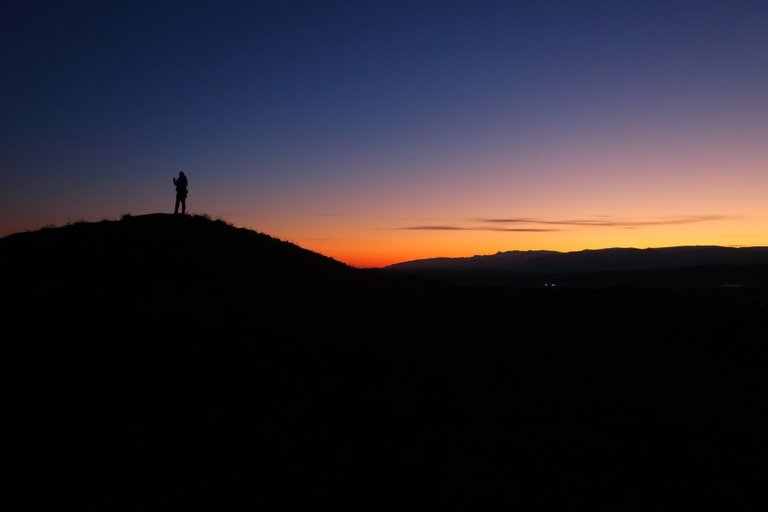
A flock of rams and sheepdogs were began to show concern for our presence.
We returned to the guest house, had dinner and went to the station. As I said, Baysun made a huge impression on me and I firmly decided to return here. The next trip is planned for the holiday of Navruz (March 21), but for now, in anticipation of the trip, I decided to go to Aeolian city this Sunday. I was already there last year, but was in the fall, when all the grass burned out. Now I want to look at the spring Aeolian city. Moreover, the trip organizers promised clear and warm weather. Already + 14-15 degrees. Apparently it is possible to say that spring came to Uzbekistan ...
!steemitworldmap 38.190234 lat 67.209259 long Continuation of the journey to the lost world of Baysun, Uzbekistan d3scr

Congratulations, Your Post Has Been Added To The Steemit Worldmap!
Author link: http://steemitworldmap.com?author=damm-steemit
Post link: http://steemitworldmap.com?post=continuation-of-the-journey-to-the-lost-world-of-baysun-uzbekistan
Want to have your post on the map too?
Beautiful post! :)
Thank you!
Hiya, @itchyfeetdonica here, just swinging by to let you know that this post made into our Top 3 in Daily Travel Digest #786.
Your post has been manually curated by the @steemitworldmap team and got an upvote from @blocktrades to support your work. If you like what we're doing, please drop by to check out all the rest of today's great posts and consider supporting us so we can keep the project going!
Become part of the Haveyoubeenhere community:
Congratulations @damm-steemit! Your post made the TravelFeed team happy so we have sent you our big smile. Keep up the good job. 😃
We noticed that you used the tag #travelfeed. With Steem moving to communities, we are retiring #travelfeed and will stop curating the tag with the launch of TravelFeed 3.0 in early March. You can learn more in our community announcement post. For your posts to be eligible for curation, we recommend you publish them through our platform TravelFeed.io. You can simply log in with your existing Steem account using Steemconnect or Steem Keychain.
Thanks for using TravelFeed!
@smeralda (TravelFeed team)
PS: Why not share your blog posts to your family and friends with the convenient sharing buttons on TravelFeed.io?
It is such a beautiful place
This post has been appreciated and featured in daily quality content rewards. Keep up the good work
Thank you!